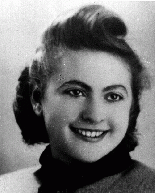You searched for: ��������������������������������������������� ���fuk7778���labor
<< Previous | Displaying results 701-750 of 1002 for "��������������������������������������������� ���fuk7778���labor" | Next >>
-
Corrie ten Boom
ArticleCorrie ten Boom was recognized as a Righteous Among the Nations for her efforts to shelter Jews during the German occupation of the Netherlands

-
Mobile Killing Squads
ArticleLearn more about Nazi mobile killing squads (Einsatzgruppen) killing activities in the Soviet Union during World War II.

-
Nuremberg Trials
ArticleTrials of top surviving German leaders for Nazi Germany’s crimes began in Nuremberg after World War II. Read about the Nuremberg trials.
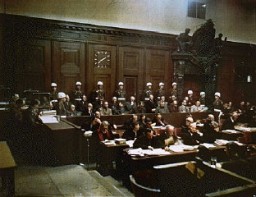
-
Death Marches
ArticleNear the end of WWII, the Germans began marching prisoners out of camps and away from the front. Read more about the brutal conditions of these death marches.

-
The Warsaw Ghetto Uprising
ArticleThe Warsaw ghetto uprising was the largest uprising by Jews during World War II. 100s of ghetto fighters fought heavily armed and well-trained Germans for nearly a month.

-
The War Refugee Board
ArticleThe War Refugee Board was formed in 1944 by executive order under President Roosevelt. It was tasked with the rescue and relief of victims of Nazi oppression.

-
Purim
ArticleLearn about the background and traditional observances of Purim, a Jewish holiday marking the deliverance of the Jews from a royal death decree.
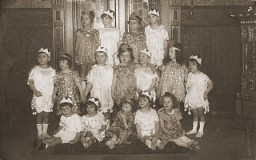
-
Jewish Community of Kalisz: Youth, Culture, Religion
ArticleKalisz had a vibrant Jewish community between WWI and WWII. Learn about its youth movements, schools, cultural life, sports, and religious life.
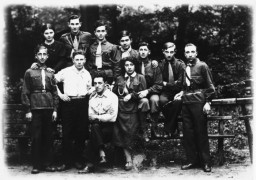
-
Foehrenwald Displaced Persons Camp
ArticleAfter WWII, many Holocaust survivors, unable to return to their homes, lived in displaced persons camps in Germany, Austria, and Italy. Read about Foehrenwald DP camp.
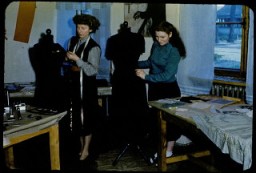
-
The Movement to Boycott the Berlin Olympics of 1936
ArticleSoon after Hitler came to power, debates began outside Germany about taking part in Olympics hosted by the Nazi regime. Learn more about calls to boycott the Games.
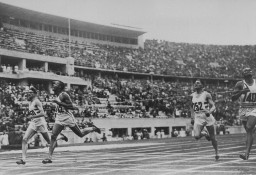
-
Althammer
ArticleThe Germans established the Althammer camp in September 1944. It was a subcamp of Auschwitz. Read more about the camp's history and conditions there.
-
Mohamed Helmy
ArticleDr. Mohamed Helmy and Frieda Szturmann helped save a Jewish family in the heart of Nazi Germany. Helmy was the first Arab recognized as Righteous Among the Nations.

-
Lebensborn Program
ArticleThe Lebensborn program, created by the SS in late 1935, was intended to promote population growth among those whom Nazi authorities deemed “racially valuable.”

-
Zeilsheim Displaced Persons Camp
ArticleAfter WWII, many Holocaust survivors, unable to return to their homes, lived in displaced persons camps in Germany, Austria, and Italy. Read about Zeilsheim DP camp.
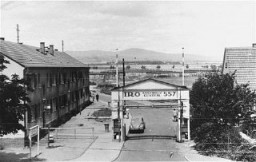
-
Vittel
ArticleGerman authorities established the Vittel internment camp in occupied France in 1941. It belonged to the complex of POW camps designated Frontstalag 194.
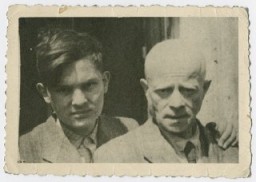
-
Zsofi Brunn (back row, center) poses with the orphans under her care
PhotoZsofi Brunn and members of her family were deported from Hungary to Auschwitz-Birkenau in June 1944. Her husband and mother were killed upon arrival. Zsofi and her daughter Anna were transferred to a labor camp in Czechosovakia. They were eventually liberated by Soviet forces in May 1945. Zsofi and Anna returned to Hungary. They moved to Rakosszentmihaly, near Budapest. There, Anna finished high school, and Zsofi directed a Jewish orphanage. This photo shows Zsofi (back row, center) posing with the…
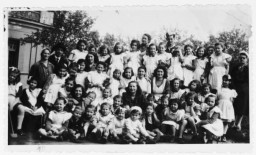
-
Letter Asking for Help to Hide Daughter
Timeline EventFebruary 1, 1943. On this date, Selek and Eda Kuenstler wrote to Sophia Zendler and begged her to hide their child.
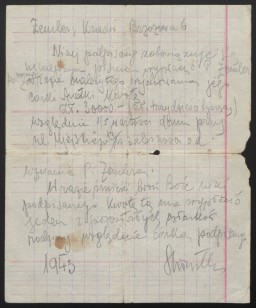
-
"Final Solution": Overview
ArticleThe term Final Solution to the Jewish Question was a euphemism used by Nazi Germany’s leaders. It referred to the mass murder of Europe’s Jews.
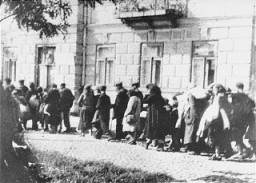
-
Ohrdruf
ArticleThe Ohrdruf camp was a subcamp of the Buchenwald concentration camp, and the first Nazi camp liberated by US troops.
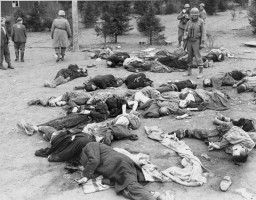
-
The 84th Infantry Division during World War II
ArticleThe 84th Infantry Division participated in major WWII campaigns and is recognized for liberating two Neuengamme subcamps, Hannover-Ahlem and Salzwedel, in 1945.
-
Collections Highlight: Auschwitz Through the Lens of the SS
ArticleKarl Höcker created a personal album of photographs chronicling SS officers’ activities at Auschwitz. Learn about this chilling collection.
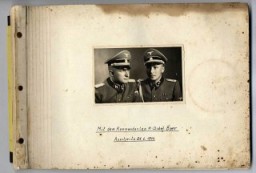
-
German Invasion of Poland
Timeline EventSeptember 1, 1939. On this date, Germany invaded Poland and initiated World War II in Europe.
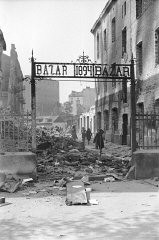
-
The Immigration of Refugee Children to the United States
ArticleMore than one thousand unaccompanied refugee children fleeing Nazi persecution arrived in the United States between 1933 and 1945. Learn more

-
What Groups of People did the Nazis Target?
ArticleJews were the primary targets for mass murder by the Nazis and their collaborators. Nazi policies also led to the brutalization and persecution of millions of others.
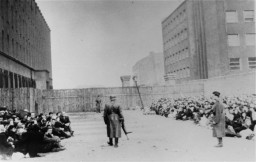
-
Norbert Wollheim describes his experiences on a transport during deportation from Berlin
Oral HistoryNorbert studied law and was a social worker in Berlin. He worked on the Kindertransport (Children's Transport) program, arranging to send Jewish children from Europe to Great Britain. His parents, who also lived in Berlin, were deported in December 1942. Norbert, his wife, and their child were deported to Auschwitz in March 1943. He was separated from his wife and child, and sent to the Buna works near Auschwitz III (Monowitz) for forced labor. Norbert survived the Auschwitz camp, and was liberated by US…

-
Mlynów: "Life under the German Occupation," According to Yehudit Rudolf
ArticleExplore firsthand testimony about the occupation of Mlynów, the establishment of the ghetto, resistance activities, and the destruction of the ghetto.
-
Children's Diaries during the Holocaust
ArticleOf the millions of children who suffered persecution at the hands of the Nazis and their Axis partners, a small number wrote diaries and journals that have survived.

-
Columbia-Haus
ArticleThe Columbia-Haus camp was one of the early camps established by the Nazi regime. It held primarily political detainees. Learn more about the history of the camp.
-
Katzenberger Case, March 13, 1942
ArticleThe Nuremberg Special Court ruled on the Katzenberger Race Defilement Case in 1942. Learn more about the outcome and impact of the case.
-
Dr. Johan Hendrik Weidner
ID CardJohan was the eldest of four children born to Dutch parents. His father was a minister in the Seventh-Day Adventist Church. Johan grew up in Collonges, France, where his father served as a pastor. After attending French public schools, Johan graduated from the Seventh-Day Adventist Seminary in Collonges, and went on to study law and business at the universities of Geneva and Paris. 1933-39: After completing his studies in 1935, Johan opened an import/export textile business in Paris. Business prospered…
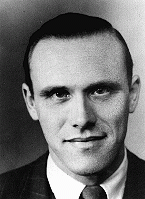
-
Stefania (Fusia) Podgorska
ID CardStefania was born to a Catholic family in a village near Przemysl. They lived on a large farm and cultivated several different crops. While her father worked with the farmhands in the fields, Stefania's mother, a trained midwife, managed the house and cared for her eight children. 1933-39: Stefania's father died in 1938 after an illness. With her mother's approval, she joined her sister in Przemysl in 1939. At 14 she worked in a grocery store owned by the Diamants, a Jewish family. They treated her like…
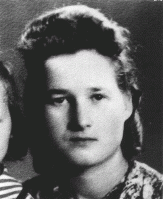
-
Yitzhak (Irving) Balsam
ID CardYitzhak was the second of four children born to religious Jewish parents. The family lived on the Polish-German border in Praszka, a small town where Yitzhak's father worked as a tailor. His work was not steady, and the family struggled to make ends meet. Yitzhak attended Polish public school in the mornings and Hebrew school in the afternoons. 1933-39: At 4 a.m. on September 1, 1939, the Balsams were awakened by an explosion. The Polish army had blown up the bridge over the Prosna River to impede the…

-
Ruth Elisabeth Dahl
ID CardRuth was born into an orthodox Jewish family in Geilenkirchen, a rural German town near the Dutch border. Her father, Isidor, was a respected cattle dealer in the area and her mother, Sophia, took care of the home. Ruth had two older siblings, Edith and Carl. 1933–39: When the Nazis came to power in Germany, life changed in Geilenkirchen. The townspeople supported the new regime and nobody helped their Jewish neighbors. Excluded from public institutions, Ruth attended a private Catholic school. In 1938,…
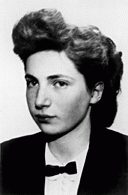
-
Kato Fried
ID CardKato was born to Jewish parents in Smolnik, a small village in eastern Czechoslovakia. While still a young child, she moved with her parents and brother Theodore to Sighet, Romania. There in the Carpathian mountains, her father ran a lumber business that exported wood to Germany and Czechoslovakia. 1933–39: In the 1930s, the popular appeal of antisemitism and fascism increased in Romania. Leaders of the Iron Guard, the militant and violent Romanian fascist party, publicly proclaimed their support for…

-
Hinda Chilewicz
ID CardHinda was the eldest of three children in a comfortable middle class Jewish family. Her father owned a textile business in Sosnowiec and her mother attended to the home. Sosnowiec in southwestern Poland had a growing Jewish community of almost 30,000 people. There was a Jewish hospital as well as religious schools. 1933–39: Hinda was just 13 years old when German troops invaded Poland on September 1, 1939. Three days later, they occupied Sosnowiec and terrorized the Jewish community, killing over a…

-
György (George) Pick
ID CardGyörgy was the only child of middle class Jewish parents living in the Hungarian capital of Budapest. His father, Istvan, was an engineer responsible for producing hydraulic grape presses for wineries. His mother, Margit, worked as a legal secretary. 1933–39: In 1938 and 1939, Hungary’s authoritarian government passed the first in a series of major anti-Jewish laws. The legislation severely restricted the participation of Jews in the economy and defined them in racial terms, much like the Nuremberg…
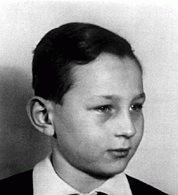
-
Moniek Rozen
ID CardOne of 12 children, Moniek grew up in Dabrowa Gornicza, an industrial town in western Poland. His father, Jacob, owned a general store, which he was forced to close in 1938 as the result of a boycott by local antisemites. Moniek attended both public and Jewish schools, and his father hoped that one day he would become a rabbi. 1933–39: On September 1, 1939, Moniek was awakened by the sounds of airplanes flying overhead as German forces invaded Poland. As the war drew closer, Moniek fled eastward, but…
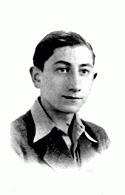
-
Elzbieta Lusthaus
ID CardElzbieta grew up in Iwonicz, a resort town in southwestern Poland noted for its mineral water. Her father, Edmund, was a respected physician and Helena, her mother, had studied pharmacology. At home, they spoke Polish and were among the few Jewish families who lived in Iwonicz. 1933–39: When German troops invaded Poland on September 1, 1939, Elzbieta's father was drafted into the Polish army. Seventeen days later, the Soviet army drove in from the east and Edmund was captured. He was transported to a…
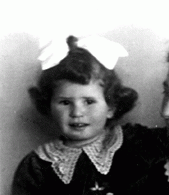
-
Barbara Ledermann
ID CardBarbara was the older of two daughters born to Jewish parents in Germany's capital, Berlin. Barbara's father was a successful lawyer. As soon as Barbara was old enough to walk, he would take her around Berlin to see the sights and tour the city's art museums. Barbara liked to go horseback riding and dreamed of becoming a dancer. 1933-39: After the Nazis came to power in January 1933, it was illegal for Barbara's father to have non-Jewish clients. His law practice quickly folded. Later that year when…
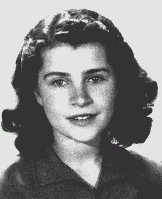
-
Bella Jakubowicz
ID CardBella was the oldest of four children born to a Jewish family in the small city of Sosnowiec, in Polish Silesia. Her father owned a successful knitting factory. In 1938, when she was 12, Bella began attending a private secondary school. 1933-39: When Bella's family returned from vacation in late August 1939, there were rumors of war. Her mother tried to stock up on food but the stores were already out of staples. The Germans took Sosnowiec on September 4; two weeks later they interned all the Jewish men…
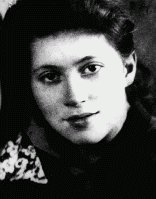
-
Boleslaw Brodecki
ID CardRaised by religious Jewish parents, Boleslaw and his older sister grew up in an apartment complex in a Jewish section of Warsaw. His father worked as an accountant. When Boleslaw was 8 years old, his mother died, and an aunt moved in to help raise him and his sister. Boleslaw loved electronics. When he was 10 years old, he succeeded in building a portable radio. 1933-39: The Germans attacked Warsaw on September 8, 1939. The bombing was relentless. Boleslaw's father wouldn't leave his ill relatives but…
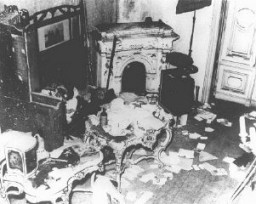
-
Cecilie Klein-Pollack
ID CardCecilie was the youngest of six children born to a religious Jewish family in the Czechoslovakian town of Yasinya. Her father, who was from Poland, taught private lessons in math and German. The family owned a small grocery store, which Cecilie's mother managed. 1933-39: Cecilie's father died in 1934 when she was 9. In March 1939 Hungary, which was sympathetic to Nazi Germany, annexed the area of Czechoslovakia where they lived. One day, Cecilie arrived home to find her mother and sister had been arrested…
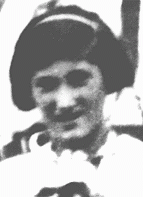
-
Jakob Frenkiel
ID CardJakob was one of seven boys in a religious Jewish family. They lived in a town 50 miles west of Warsaw called Gabin, where Jakob's father worked as a cap maker. Gabin had one of Poland's oldest synagogues, built of wood in 1710. Like most of Gabin's Jews, Jakob's family lived close to the synagogue. The family of nine occupied a one-room apartment on the top floor of a three-story building. 1933-39: On September 1, 1939, just a few months before Jakob turned 10, the Germans started a war with Poland.…

-
Laura Ellenbogen
ID CardLaura was one of five children born to a Jewish family in the southeastern Polish town of Rozwadow. Jews comprised almost two-thirds of the town's population. Laura's father worked as a wholesaler, providing families in the area with grain, potatoes and other produce. Laura attended one of the town's public schools. 1933-39: Germany and the Soviet Union partitioned Poland [as a result of the Nazi-Soviet Pact] in September 1939. Laura's town lay on the demarcation line. On September 24 the Germans reached…
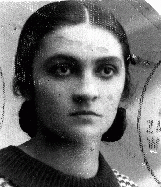
-
Marthijn Wijnberg
ID CardWhen Marthijn was 10, his religious Jewish family moved from Groningen to the town of Zwolle. There, his parents ran the only kosher hotel in the region. The Wijnbergs had two other sons and a daughter. All of the children attended Dutch public schools, and four afternoons a week they also went to religious school to study Jewish history, Hebrew and the Bible. 1933-39: Marthijn could play almost any instrument, including piano, saxophone and accordion. Sometimes each of his brothers would pick up an…
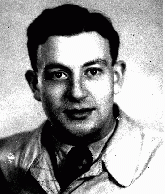
-
Raszka (Roza) Galek
ID CardRoza was born to a Jewish family in a predominately Catholic village near Warsaw. Her father owned a prosperous pearl button factory that employed some 100 people. They shared a large home with Roza's grandmother who ran a general store and bakery in the village. Roza and her three sisters attended Polish schools and took Hebrew lessons at the towns' synagogue. 1933-39: Roza's father frequently did business in Warsaw so the family moved there in 1934. They loved the city, and often went to concerts and…
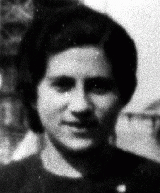
-
Saul Ingber
ID CardSaul was born to a Jewish family in the small northern Transylvanian town of Moisei, famous for its 18th-century monastery, to which many Christians came on pilgrimage. Saul's family was religious. His father transported lumber to several mills in the area. 1933-39: Saul and his brothers attended a Jewish school held at their neighbor's home. A rabbi led them in prayers and they learned quotations from holy texts. After his schooling he needed to learn a trade, so he decided to become a tailor. Jews were…
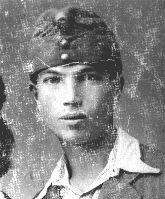
-
Fischel (Philip) Goldstein
ID CardFischel was the youngest of five children. He came from a Jewish family of artisans; his father was a tailor, his uncles were furriers, and his sister was a dressmaker. Fischel started his education at a Jewish parochial school at age 3, where he studied Hebrew and Yiddish. He continued his education at Jewish private schools until age 10, when he entered Polish public schools. 1933-39: After graduating from the Polish public school system at age 14, Fischel started an apprenticeship in his father's…

-
Claude Brunswic
ID CardClaude was one of five children born to Jewish parents in the university city of Heidelberg. His father, a physician specializing in internal medicine, had his practice on the first floor of the apartment building in which the family lived. Claude was an avid swimmer until November 1932, when local Nazi party edicts forbad Jews to use the city pool where he swam. 1933-39: In January 1933, just after Hitler became chancellor of Germany, hoodlums attacked Jewish-owned businesses in Heidelberg. They broke…
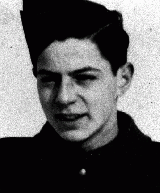
-
Amalie Petranker
ID CardAmalie was one of three daughters born to Jewish parents. The family lived in Stanislav [Stanislawow], Poland. Her father was an ardent supporter of resettlement in Palestine, and dreamed of moving his family there to help build the Jewish homeland. Amalie and her sisters attended private Hebrew primary and secondary schools to help prepare them for their eventual immigration to Palestine. 1933-39: In September 1939 Stanislav [Stanislawow] was occupied by the Soviet army. Amalie's father lost his job in…
